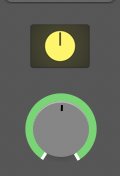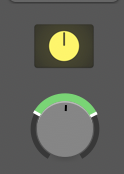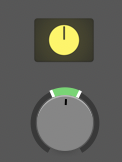Setting Reverb: Finding a Space That Feels Right
- Leiam Sullivan
- Mar 13
- 4 min read
Updated: 14 hours ago
Reverb and I have history. There have been times when I’ve been happily swimming in lush, spacious mixes—and others when I’ve sat staring blankly at my speakers, wondering what exactly just went wrong. It’s a tricky effect: it can transform a track or bury it, sometimes within seconds.
Over the years, through experimenting with countless hardware units and plugins, I’ve finally landed on an approach that consistently works—and I’m happier with my reverbs now than ever before. As I continue fine-tuning my process, I wanted to share where I’ve gotten to so far.
Start by Setting the Room
The most important step is deciding on the space—the environment I want my track to exist in. Rather than treating reverb as a sprinkling of magic dust over certain elements, I approach it as placing the whole track in one coherent world. I send everything in the mix to a single reverb aux/bus at 0dB.

The actual send level doesn’t matter too much, as long as everything is consistent going in and a decent level. This sets up the initial feeling, or mood, of the track. Think of it as the whole track is suspended in the space.
I keep a shortlist of go to reverbs:
• Lexicon reverbs (always musical and warm)
• Valhalla Shimmer (for my big distance reverb)
• PhoenixVerb by Exponential Audio (clean and beautifully transparent)
• And yes, even some stock DAW plugins (often underrated)
I remember a guest on Pensado’s Place saying during “Batter’s Box” that reverb is “the feeling in the track,” and that’s exactly it. At this stage, I’m not trying to noticeably “hear” the reverb—I’m looking to feel the track settle naturally into a space.
Finding Suspension
Typically, I start off with a room or plate reverb, pulling the aux fader all the way down. Then, slowly, bringing the fader up until the entire track gently sits in the chosen space.
I once read (I think it was Attack Magazine) that sounds in reverb should feel like they’re “suspended”. That stuck with me—it’s exactly what I’m looking for at this point: a cohesive, floating feel.
If rooms or plates don’t quite hit the mark, I’ll experiment with halls and chambers instead. It’s finding that intangible moment when the track feels right.
Adjusting the Balance
Once I have the initial space dialed in, I fine-tune the balance. I’ll bring down the kick and bass sends until their obvious reverb tails vanish. Not completely dry, I still want them subtly present in the same space. Just enough so they feel connected.
From there, placing individual elements becomes intuitive:
• Want a sound to sit further back? Push a little more send.
• Want it to move closer? Ease it off.
The goal is to have all the elements in the mix present in the space, creating a cohesive starting point.
I also EQ on the reverb aux, gently rolling off the highs and lows before the reverb itself.


Soloing the reverb channel occasionally helps me understand exactly where these roll-offs place the reverb in the overall picture of the track.
Layering Spaces
One reverb can be enough, but layering spaces can really enhance depth. I typically end up using two or even three reverbs to build dimension:
1. Primary Room (Room or Plate): Your main environment—this is the “glue”.
2. Secondary Space (Larger Reverb): Adds extra depth, complexity, and emotion.
3. Specialty Space (Valhalla Shimmer): My secret weapon, adding atmospheric texture and distant depth.
For the second and third reverbs, I narrow the stereo width slightly, creating the illusion of distance—just like perspective in a painting. The further away the space feels, the narrower I pan it. I find this helps the biggest, most distant reverb naturally sit behind everything else, reinforcing a sense of depth and distance.
Should Shimmer Be Mono or Stereo?
Mono Shimmer – When It Makes Sense
mono the Shimmer if:
You’re using it as a subtle background haze rather than a featured element
You want the far verb to feel distant but centred, like it’s coming from behind the mix, not around it
You’re already using lots of stereo width elsewhere (pads, hats, stereo FX)
You’re mixing for vinyl, club systems, or mono compatibility
Mono shimmer can give a ghostly, distant feel, like it’s echoing down a tunnel—especially effective in minimal techno or dub-influenced styles.
Stereo Shimmer – When It Shines
Shimmer really comes alive in stereo if:
You want it to expand the width and height of the mix
You’re using it on melodic or atmospheric elements that benefit from a wide halo
You’re layering it with a mono main reverb, and you want depth and stereo space
You’re looking for a surreal, dreamy, cinematic quality
Stereo shimmer becomes part of the emotional architecture of the track—creating a sense of air, lift, and float.
It’s About Feel, Not Formula
Ultimately, the key takeaway here isn’t a technical rulebook; it’s about feel. Approaching reverb in this way—placing the entire track in a unified, intentional space rather than just applying it piecemeal—changed everything for me.
Reverb isn’t just another effect; it’s where the track lives. Get that right and everything else falls beautifully into place.










Commentaires